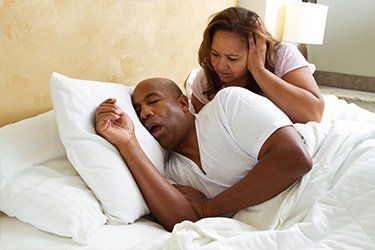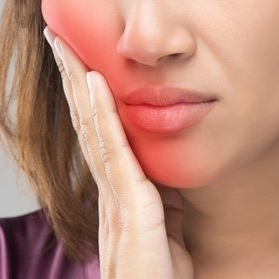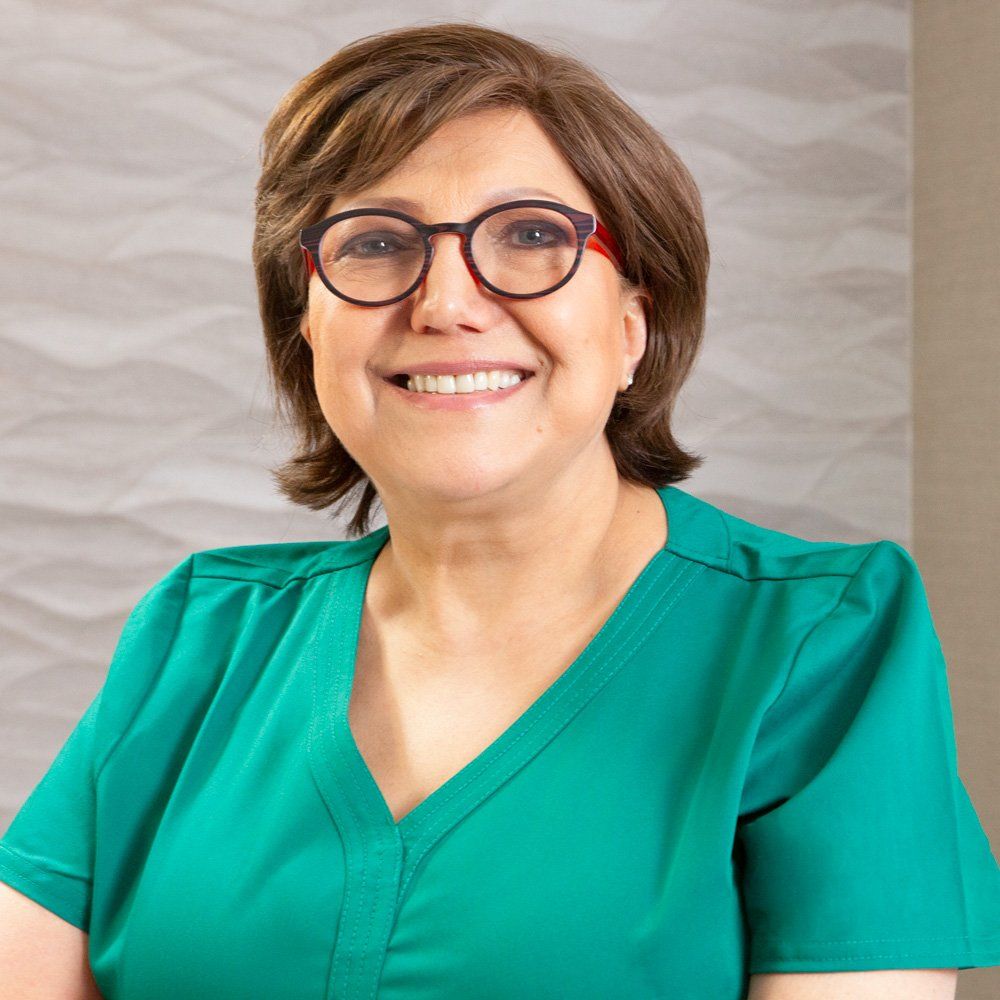Cancer, Obstructive Sleep Apnea and Sleep-Disordered Breathing
It’s well known that obstructive sleep apnea (OSA) and other forms of sleep-disordered breathing (SDB) are associated with high blood pressure and cardiovascular disease. Now, recent evidence suggests that the presence of these breathing issues results in higher rates of mortality from cancer.
A
2012 study from the University of Wisconsin found that mortality increases as the severity of sleep-disordered breathing increases. In fact, this long-term study of more than 1,500 individuals in Wisconsin found that those with sleep apnea died from cancer at a rate about 4.8 times higher than those with no sleep breathing problems. A
similar study in 2019 found that people with severe obstructive sleep apnea were about 1.35 times more likely to be diagnosed with prostate cancer (for men) or breast cancer (for women). This study found the risk is higher for women with obstructive sleep apnea than for men.
If you are concerned about your sleep apnea and cancer risk, reach out to Breath of Life Dental to schedule an evaluation with Dr. Maryam Seifi. She will help ensure your sleep-disordered breathing is fully handled to reduce your cancer risk and help you get the rest you deserve at night. Call us at
(301) 818-2653 to schedule your appointment today.
How Can We Help You?
What Exactly Is Cancer?
In simple terms,
cancer
is a type of disease where cells in the body begin to grow and divide uncontrollably. When this happens, the extra cells can form a
tumor, which is a collection of excess cells in the body. These tumors can be
malignant, meaning they spread to nearby tissues and cause harm, or they can be
benign, meaning that there are still excess cells in the body but they aren’t causing any harm.
What Causes Cancer?
Cancer is caused by cell mutation, which is when the genetic structure of cells in the body is changed. Cell mutation can happen when cells divide, when cells are damaged, or when the mutation is inherited from one’s parents.
Most of the time, the human body can detect and handle these mutated cells before they can cause any harm. But in some cases, the mutated cells are not caught in time and can reproduce, creating more and more cells with the wrong set of instructions. If the mutated cells start moving into other parts of the body and causing damage, it’s called
cancer.
Mutation During Cell Division
Each cell has a set of instructions (DNA) that tells it what to do in the body. When cells reproduce, they copy these instructions so that the new cells also know what to do in the body. Sometimes, there is an error in the copy, and the new cells don’t have the right instructions for their purpose in the body. This can cause the new cells to do things they shouldn’t do. Every cell in the body serves a specific purpose, so having cells that are not taking care of that purpose or doing something else entirely can lead to unwanted medical conditions like cancer.
Mutation Due to Damage
Even though the body’s cells are very small, they can still get damaged. Sometimes, the type of damage a cell experiences causes it to mutate. While there is no single cause for cancer, scientists agree that the following types of damage to cells can increase one’s risk of developing this disease:
- Radiation exposure, such as from the sun or x-rays
- Smoke inhalation from cigarettes, pollution, exhaust, etc.
- Chemical exposure, such as pesticides, dyes, or certain acids
- Hormone use, such as in hormonal birth control
- Obesity, which increases hormone production and inflammation
Mutation Due to Family Genetics
Cancer itself is not a type of gene that can be passed down from parents to children like eye color or dimples. However, if one or both parents has a specific type of mutated gene, it is possible to pass that mutation down to their child. Then, when those mutated cells reproduce, it can cause cancer. This doesn’t mean that a child who inherits a mutated gene from their parent(s) will absolutely develop cancer. It does mean that they will have
an increased risk of developing cancer.
So far, scientists have found over 150 different types of cancer. But there are about 200 different types of cells in the human body, and any one of them can experience a mutation. Essentially, cancer can develop in any part of the body, but the most commonly diagnosed types of cancer incidence in the United States occur in the:
- Breast
- Prostate
- Lung
- Colon
- Skin
- Bladder
- Lymphatic system
- Kidney
- Uterus
- Blood
- Pancreas
- Thyroid system
Symptoms of Cancer
Because there are so many different types of cancer, there are also a wide variety of symptoms, and these symptoms can vary between men and women. Additionally, many of the symptoms of cancer are also symptoms of other diseases, vitamin and mineral deficiencies, or health problems unrelated to cancer. In general, the following symptoms could be indicative of cancer if they become chronic or get progressively worse over time:
- Fatigue
- Headaches
- Body aches and pains
- Lumps
- Persistent cough
- Unusual bruising
- Vision problems
- Hearing problems
- Sudden weight loss
- Lack of appetite
- Difficulty breathing
- Painful urination
Treatment for
Cancer
There are many different treatments for cancer depending on the type of cancer one has and at what stage it is diagnosed. In general, the earlier cancer is detected, the easier it is to treat, which is why routine checkups from a physician are an important step in maintaining good health. Some common cancer treatments include:
- Chemotherapy, which uses specific drugs to kill cancerous cells.
- Hormone therapy, which can slow down or stop the growth of cancerous cells.
- Immunotherapy, which helps give the immune system the strength to fight cancer
- Radiation therapy, which can kill cancerous cells or shrink tumors
- Surgery, where a surgeon physically removes cancerous cells from the body
It is also important to keep in mind that scientists are continually making new discoveries about cancer and developing effective treatments for this disease. While more research is needed to fully understand and eradicate cancer, there are many treatment options that can send cancer into remission (meaning the symptoms are gone and the cancer, while still present, is no longer harming the body) or remove it from the body entirely. By getting routine physical examinations and checkups as recommended by your physician, you will increase your chances of catching cancer in its earliest stages when it is easier to treat.
What Is Sleep-Disordered Breathing?
Sleep-disordered breathing (SDB) is a term used to describe any condition that causes the body to breathe abnormally or stop breathing during sleep. The body’s autonomic nervous system, which is made up of nerves spread throughout the body that carry information between the body and the brain, is what regulates breathing. The reason we don’t have to consciously remind ourselves to breathe is because the autonomic nervous system is taking care of it for us. But when there is a problem with this system, or when something physically blocks a person’s airway, it can lead to sleep-disordered breathing.
Types of Sleep-Disordered Breathing
There are several different types of sleep disorders that can affect the breathing patterns of adults or children, including:
- Obstructive sleep apnea (OSA) – when the airway gets blocked during sleep and causes one to suffocate.
- Central sleep apnea (CSA) – when issues in communication between the brain and the respiratory system cause breathing to stop.
- Complex sleep apnea – when, upon receiving treatment for obstructive sleep apnea, one begins to experience central sleep apnea.
- Sleep-related hypoventilation – when carbon dioxide levels in the blood are elevated during sleep due to insufficient breathing.
- Sleep-related hypoxemia – when oxygen levels in the blood are too low during sleep.
- Catathrenia – when a monotonous groaning sound comes out of a person’s throat when they exhale during sleep, which can last as briefly as 1 second or as long as over 30 seconds.
Symptoms of Sleep-Disordered Breathing
The specific symptoms of sleep-disordered breathing (SDB) can vary depending on the type of SDB one is experiencing. However, as SDB affects a person’s ability to achieve a full night’s rest, there are
common symptoms among these conditions, including:
- Fatigue
- Memory problems
- Loud snoring
- Morning dry mouth
- Morning headaches
- Inability to focus
- Low sex drive
- Unexplained mood changes
- High blood pressure
- Depression
- Anxiety
- Sudden short temper
- Insomnia
- Choking or gasping during sleep
Disclaimer
This article provides information about cancer and obstructive sleep apnea based on current research and understanding. While every effort has been made to ensure accuracy, this content is for informational purposes only and should not be taken as medical advice. This article is not intended to replace professional medical diagnosis or treatment; do not use this information to diagnose or treat any health issues or diseases. Always seek the guidance of a qualified health professional for any questions you may have about your medical conditions or if you are experiencing any concerning symptoms.














